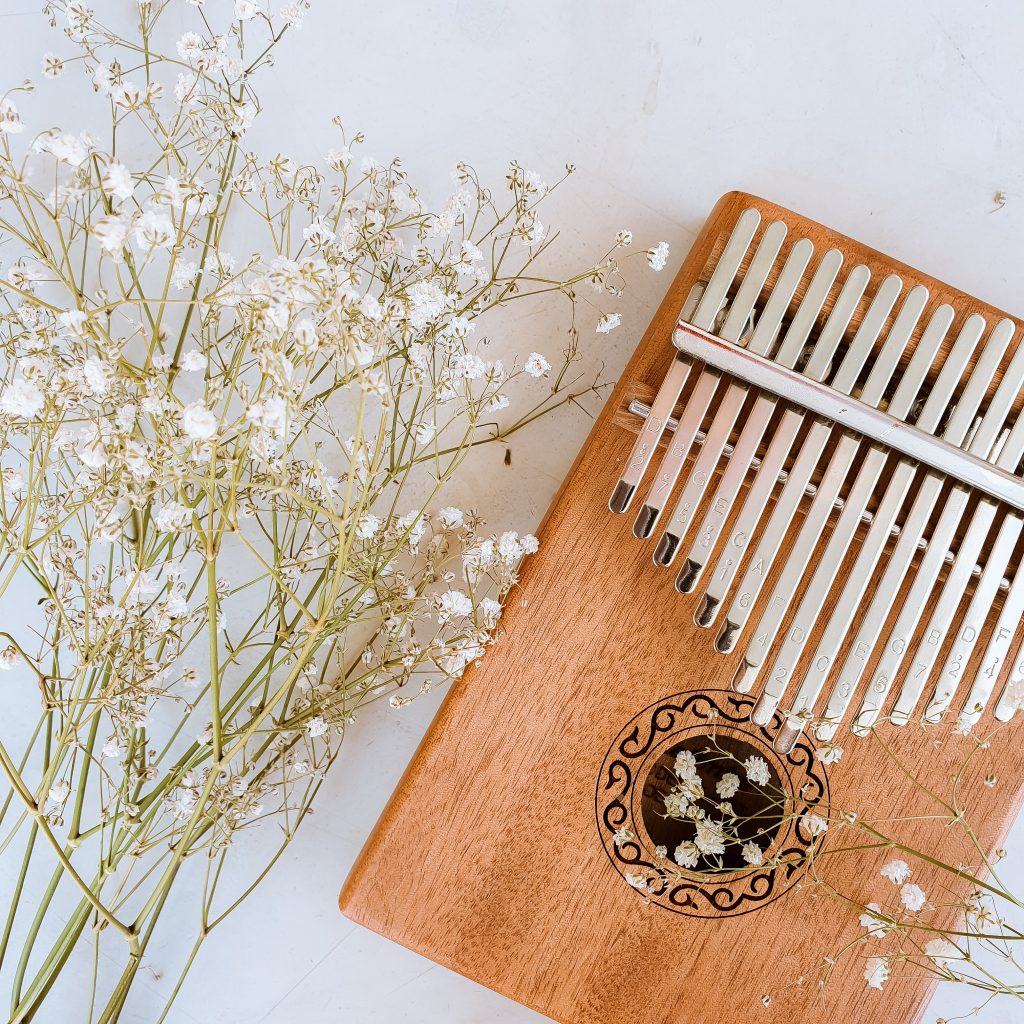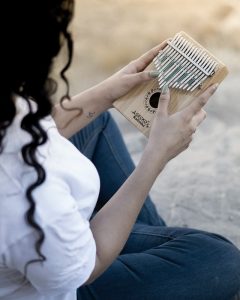Kalimba Musical Instrument

Coming from a very far history of instruments, Kalimba was recently brought back to modern society that gained its popularity again to the surface. Getting to know its long existence, a variety of changes occurred from its structure, material, and sound by dedicated music developers to retain its history up to this day.
Kalimba is a musical instrument, typically a wooden soundboard attached with staggered metal keys and played being held with both hands while plucking the tines with thumbs or other fingers depending on the version of Kalimba. Nowadays, the instrument became popular in participating in modern rock instruments creating synchronized sounds with electric guitars, drums, etc.
African Musical Instrument Kalimba
Kalimba is an African instrument under the family of lamellophones introduced back in 10,000 B.C. with almost the same structures but instead made out of bamboo and no metal present. it was said that the instrument was used by God to create the world with all the living beings under a perfect tune while one day accidentally springing a false note from an unfortunate detuned kalimba that leads to the creation of man as said in Bantu mythology, bringing the idea of the disoriented man to recreating Kalimba as a hope to bring back the harmony in the troubled world.
The instrument mostly circulated from the central to the southern part of Africa while later on extended its reach to South America and the Caribbean that was brought by the era of slaves. Back then, Kalimba was developed in various names like mbira, sanza, likembe, thumb piano, etc. Mbira was traditionally used in Zimbabwe as a musical mystic trance to communicate with the dead ancestors while some like storytellers make use of the instrument when traveling from village to village as a form of an announcement in delivering stories.
Hugh Tracey’s Kalimba
Hugh Tracey is an English ethnomusicologist that retained the history of African music from the 1920s until the 1970s by collecting and archiving music from Southern and Central Africa. The person himself has recorded thousands of African music which mostly consisted of a musical instrument called mbira and later on was popularized globally as Kalimba.
He was born in Willand, Devon, in 1903. He traveled to Southern Rhodesia(Current Zimbabwe) in late 1920s which he continued his work as a farmer. During his work, he got deeply inspired by the local music that leads him to leave farming and work for the South African Broadcasting Corporation in 1934. Furthermore, in 1947 he then established the African Music Society in Roodepoort, South Africa.
He became particularly interested in Mbira as the national instrument of Zimbabwe that became a part of Shona people for hundreds of years. He invested time and effort to spread awareness of the African’s way of music, inspiring him to craft an adaptation of Mbira which is now known as Kalimba. Hugh Tracey also established the International Library of African Music(ILAM) and run the foundation as the director in 1954 that lead him to a recording tour in archiving over 35,000 African folk music.
Different Types of Kalimba
There is a variety of Kalimbas that existed today in an approach to cope up with the modern music industry but preserving the history comes with a trademark on what a real Kalimba should sound and look like. Kalimba comes flexible to how it is made today by simply crafting the right ones in a match for every kind of musician.
There are three kinds of Kalimbas with the actual trademark which are treble, celeste, and alto. Each of them comes somehow similar to its appearance due to its unique metal keynotes but will mostly differ in its general function and complete details.
The Treble Kalimba is a 17-note range that has a soundbox and provides a deeper resonance than the other kinds. It is also the original form of Kalimba that was brought around the world by Hugh Tracey in the 1960s which became an ideal Kalimba for people with smaller hands.
The Celeste Kalimba is another series of Hugh Tracey’s work. Celeste also has a 17-note range but with a flat solid soundboard that provides a crisp sound and delivers a lesser volume of sound than Treble. Celeste is an alternative way of playing music by letting a sound massage travel onto the body of the user which is typically used to soothe the mind and wander a bit.
The Alto Kalimba has become one the most popular series of Kalimba by Hugh Tracey today. It is simply crafted with 15-notes only and has the same soundbox as Treble. Alto Kalimba became popular because of the easy-to-comprehend features that made it easy for the public to use, at the same time Alto Kalimba can adapt to the majority of modern musical notes due to its fine-tuning possibilities.

Kalimba Standard Tuning
Tuning a Kalimba comes very sensitive in some cases, such as dropping the Kalimba itself or getting the tines caught in some cloth that can lead to mess up the original tuning. Regarding standard tuning, Kalimba has been altered to numerous tuning but marked unique combinations that made it ideal to be played in much different music styles.
Normally a Kalimba comes with a standard tuning of C or G, but as said the tuning can be altered and explored into crafting possibilities and compatibilities with other songs while the standard tuning marks as a starting and return point whenever a Kalimba comes to an out of tune tone.
Tuning a Kalimba requires a tool called “Tuning Hammer” accompanied with an electric tuner to assess the right keys and notes being played by each tine. The tuning process is done by simply tapping the ends of each tine with the tuning hammer and testing it with the electric tuner to get the exact tuning. The spacing of each tine should also be considered to have an equally spaced position from one another, this is to avoid the unnecessary buzz from neighboring tines that comes a bit close to the others which makes it a problem in the tuning process for reasons that adjusting one tine spacing means making it closer to another.
